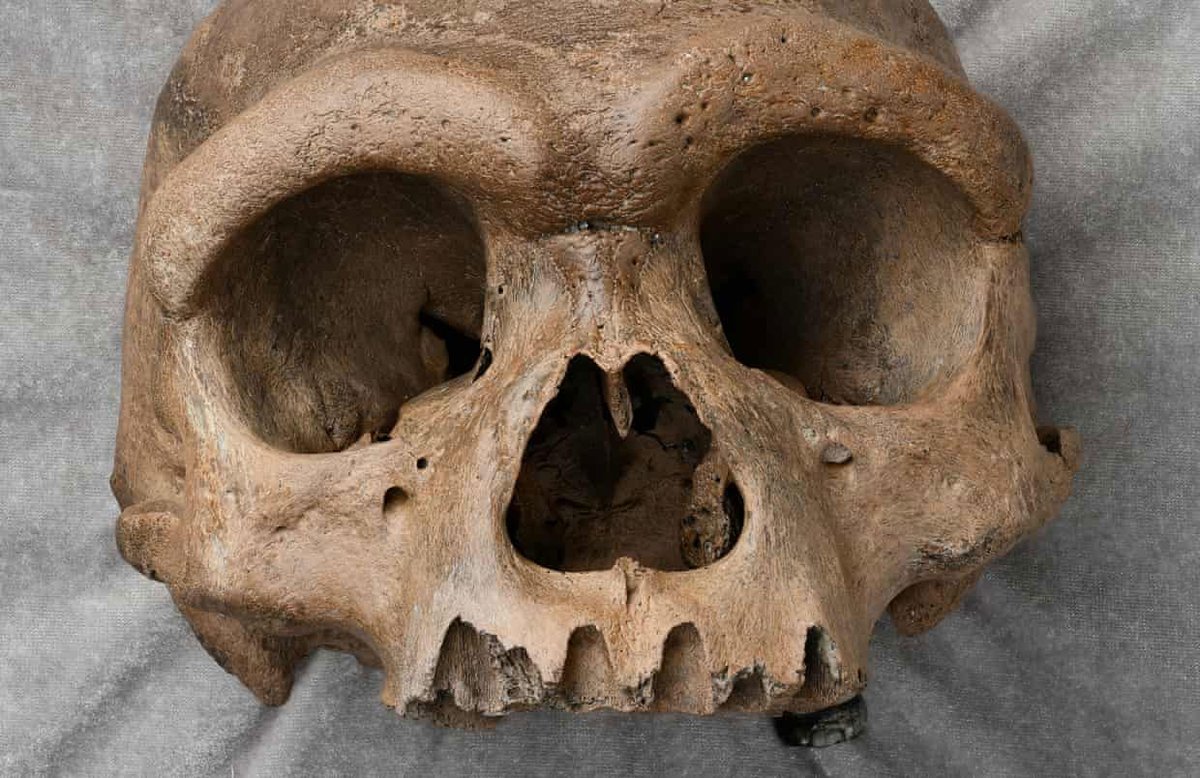
The new report of fossil material from Nesher Ramla, Israel, claims a "previously unknown archaic Homo population" some 140,000 years ago. It's a big claim in an area where most scientists have thought that early modern humans and Neandertals interacted. science.sciencemag.org/content/372/65… 

Looking at the morphology of the mandible NR-2, it falls within the variation of fossils attributed to Neandertals, and is similar to Krapina, which is around the same age, and Sima, which are early Neandertals. This seems like a basic early Neandertal jaw. 

The other fossil NR-1 is a complete right parietal bone and fragments of the left parietal. The analysis of shape places is near late Neandertals and early Neandertals, but a bit less "barrel-shaped", thereby similar to generalized H. erectus and African Middle Pleistocene Homo. 

If you look at that parietal PC plot, you can see that NR-1 is in an area where the morphology is totally undiagnostic. It's near La Quina (Neandertal), Petralona (MP Europe), Kabwe (MP Africa), Ngandong (MP Java) and Dmanisi (EP H. erectus). 

The supplementary info additionally presents PC1 v PC2, where NR-1 overlaps these groups, and a discriminant function that places the NR-1 parietal into the area where no good discrimination exists between Neandertals, Middle Pleistocene Europeans, and H. erectus/other MP Homo. 

I can understand a hesitancy to attribute the parietal to Neandertals, yet I think it is overstating the evidence to say these fossils document a "previously unrecognized group", or "late survivors of a Levantine Middle Pleistocene paleodeme". They're well within known variation.
Why avoid the obvious similarities between these fossils, especially the NR-2 mandible, and Neandertals, particularly Krapina? That relationship is the interesting one, with clear relevance to paleoclimate changes. Nesher Ramla may be a likely Krapina source population. 

The accompanying paper on the Nesher Ramla archaeological material has some interesting new data but is frustrating for its overstated claim that "late MP Homo fully mastered advanced Levallois technology". "Late MP Homo" includes many Neandertals! science.sciencemag.org/content/372/65… 

I agree with the paper's conclusion that "cultural diffusion and interaction across Homo populations is the most likely reason for such a close cultural similarity between MP Homo and H. sapiens." And I would add other species and populations also. Cultural interaction! 

But I would add: Cultural diffusion and interaction in humans, Neandertals, Denisovans, go along with genetic diffusion and interaction. That makes it likely that fossils from areas of interaction will not fit cleanly into groups defined in a peripheral area like Europe.
Adding later; I find the discussion of the recurrent centripetal Levallois-dominated assemblage weird. They discuss how this reduction strategy occurs in European sites from 300-190 ka (MIS 8-6), but for some reason ignore this to claim connections with (later) East African MSA.
• • •
Missing some Tweet in this thread? You can try to
force a refresh









